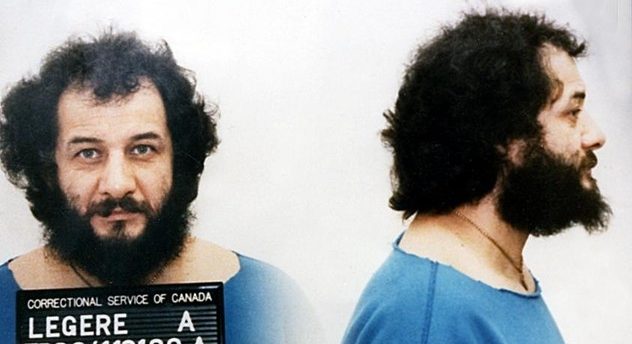The second episode of Peacock’s horror series ‘John Carpenter’s Suburban Screams,’ titled ‘A Killer Comes Home,’ revolves around the murders and other crimes committed by Allan Legere in the city of Miramichi, located in the province of New Brunswick. Rick MacLean and David Cadogan, the former editor and publisher of the local newspaper Miramichi Leader, summarize the terror caused by Legere in their city and how they became targets of the serial killer after publishing reports about him. Intrigued by the murderer’s chilling tale, we delved into his current whereabouts. If you are eager to know more about Legere, you are at the right place!
“The Monster of Miramichi”
Allan Legere was born on February 13, 1948, in Chatham Head, New Brunswick. Legere first terrorized the city of Miramichi by being involved in the murder of John Glendenning during a robbery in 1986 with two accomplices named Todd Matchett and Scott Curtis. Although Legere was captured by the authorities after the Glendenning murder, he managed to escape from custody while visiting a hospital in Moncton. He convinced the officers along with him to let him use a washroom at the establishment alone, only to pick the lock on his handcuffs. He then escaped from the hospital premises to become a serial killer known as the Monster of Miramichi.

After running away from the authorities, Legere committed four more murders in and around Miramichi. On May 29, 1989, as the episode reveals, he killed Annie Flam and sexually assaulted Nina Flam. After the Flam murder, Legere killed sisters Linda and Donna Daughney on October 13, 1989, and set fire to their house before leaving the same. Over a month later, on November 16, 1989, the serial killer murdered Father James Smith. More than a week after Father Smith’s murder, Legere was recaptured by the authorities. He was arrested after a failed carjacking that began in Saint John and ended outside Rogersville.
Legere’s Denied Parole
Around two years after his capture, Legere was convicted of the murders he committed after his escape. He was sentenced to life imprisonment without the possibility of parole for 25 years. From 1991 to 2015, he was imprisoned at the Special Handling Unit, a super-maximum security prison located in the Regional Reception Centre, which is located at the Correctional Service of Canada complex in Sainte-Anne-des-Plaines, Québec. In 2015, Legere was transferred to Edmonton Institution, a maximum security prison located in Edmonton, Alberta, where he is currently imprisoned.

In August 2020, Legere applied for day parole, which terrified the residents of Miramichi. “My first thought? My blood went cold. They call him the ‘Monster of the Miramichi’ for a reason. That’s exactly what he is, and always will be,” Cathy Martin told CTV News. “Do I believe I’m in potential danger if he can get somewhere close to me? The answer is ‘Yes.’ I never expected there would be any serious consideration of him being allowed out on any kind of parole, ever,” MacLean told CBC about Legere’s parole hearing.
“They’re not people who get better. They can sit in wait for years. If he’s physically capable of doing what he did in 1989, he will do it again,” the journalism instructor at Holland College in Prince Edward Island at the time told CBC about the hearing in January 2021. The residents of Miramichi must have had a sigh of relief when a parole board rejected Legere’s request for supervised release. “Your risk is not manageable. The victim harm is still felt to this day and you have a number of outstanding issues,” parole board member Delaine Dew said in the hearing.
During the hearing, Legere said that he doesn’t understand “why they [the Miramichi community] can’t forgive me, why they can’t forget,” especially after he became a “different man.” He added that he doesn’t consider himself a violent man. The parole board made the decision after considering that a weapon was found inside the television in his cell. The board noticed Legere’s failure to accept responsibility for his crimes. The hearing also revealed that the serial killer tried to escape from prison once again in 1991, after his conviction, which was kept under wraps.
“According to file information, you have a history of attempting to and being successful in, escaping from custody. In 1987 you attempted to escape twice, in 1989 you did escape, and in 1991 you attempted once again to escape. In regards to the 1991 attempt, file information relays that your plan to escape custody included an intention of taking a female staff hostage,” the parole board’s decision reads.
Read More: Peacock’s Suburban Screams Comprises True Stories About Survivors


You must be logged in to post a comment.